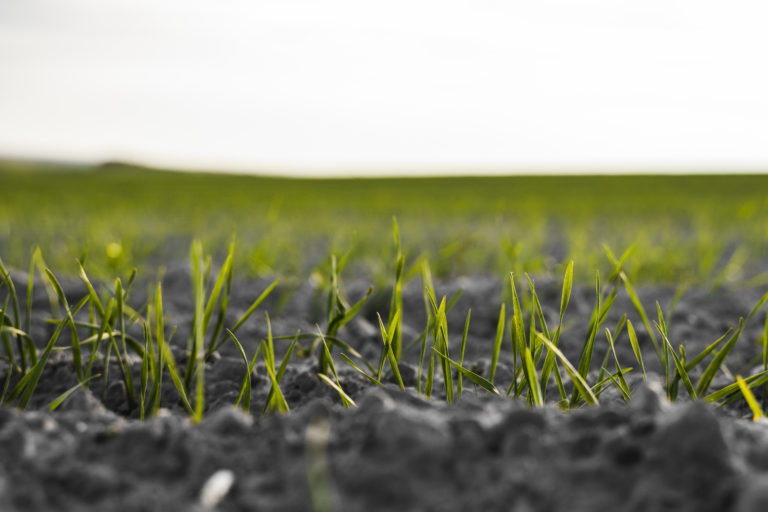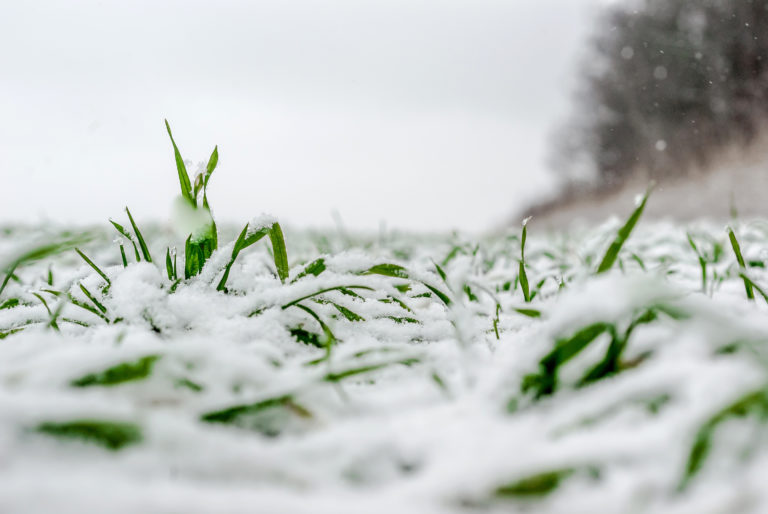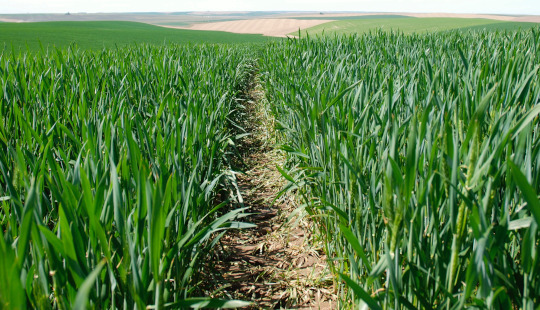Soft white winter wheat, which is planted in the fall, is the dominant class grown in Eastern Washington.
Exactly when the crop is planted depends on the moisture condition of the soil. In years of adequate moisture, seeding is largely complete in September. Under drought conditions, farmers may wait into October or even early November to plant. Each week of delay after September will impact harvest yields.
In summer fallow areas below 14 inches of precipitation, farmers use planters, known as drills, that form deep furrows in order to place the seed into moisture. Seeds need strong coleoptiles (the sheath that protects the first shoot that emerges from the ground) to force through five or more inches of soil. Rain at the wrong time leads to soil crusting, which prevents the coleoptile from emerging, and the farmer must reseed again. It is not unknown for a farmer to seed the same field three times due to crusting events.



